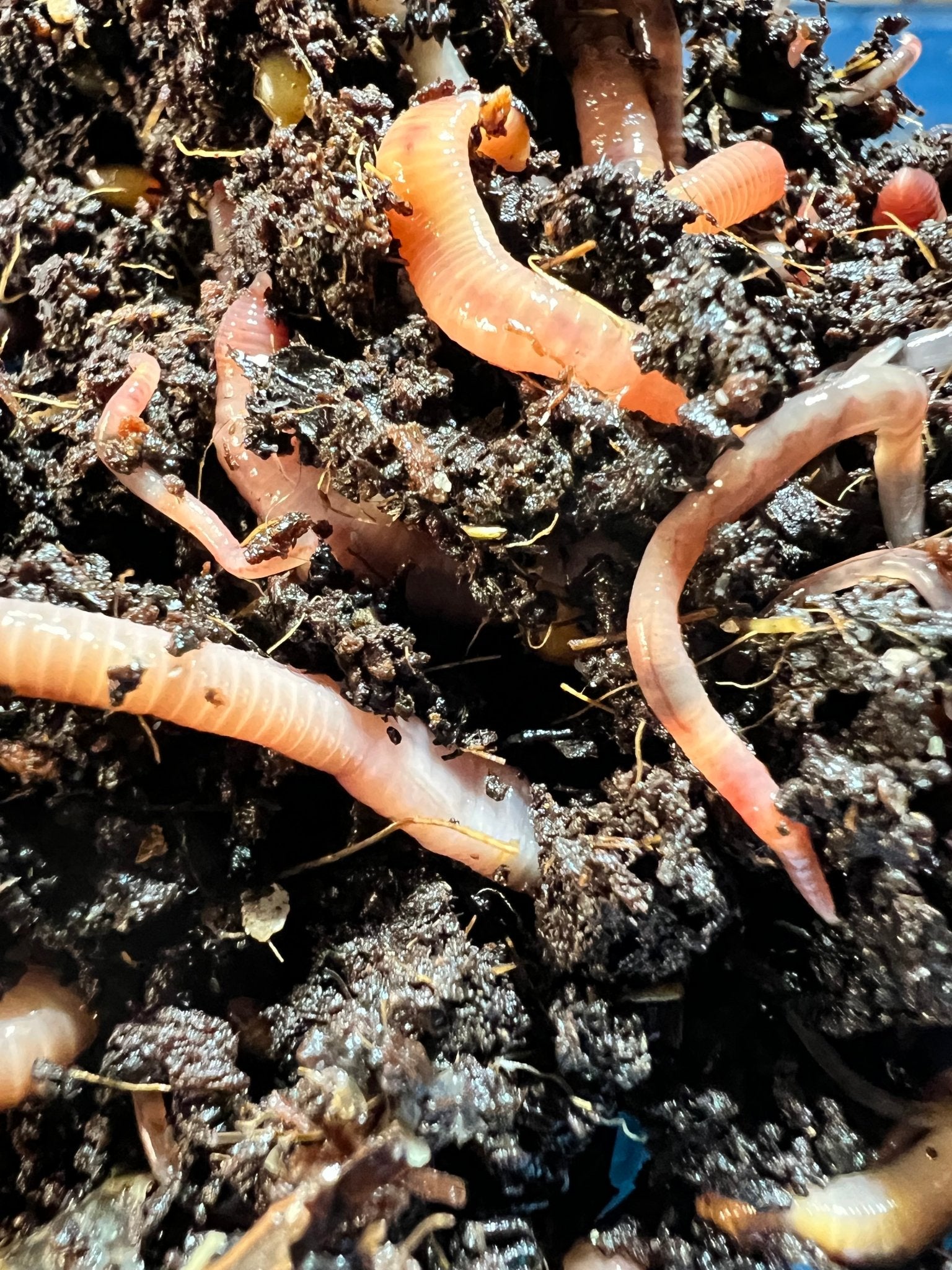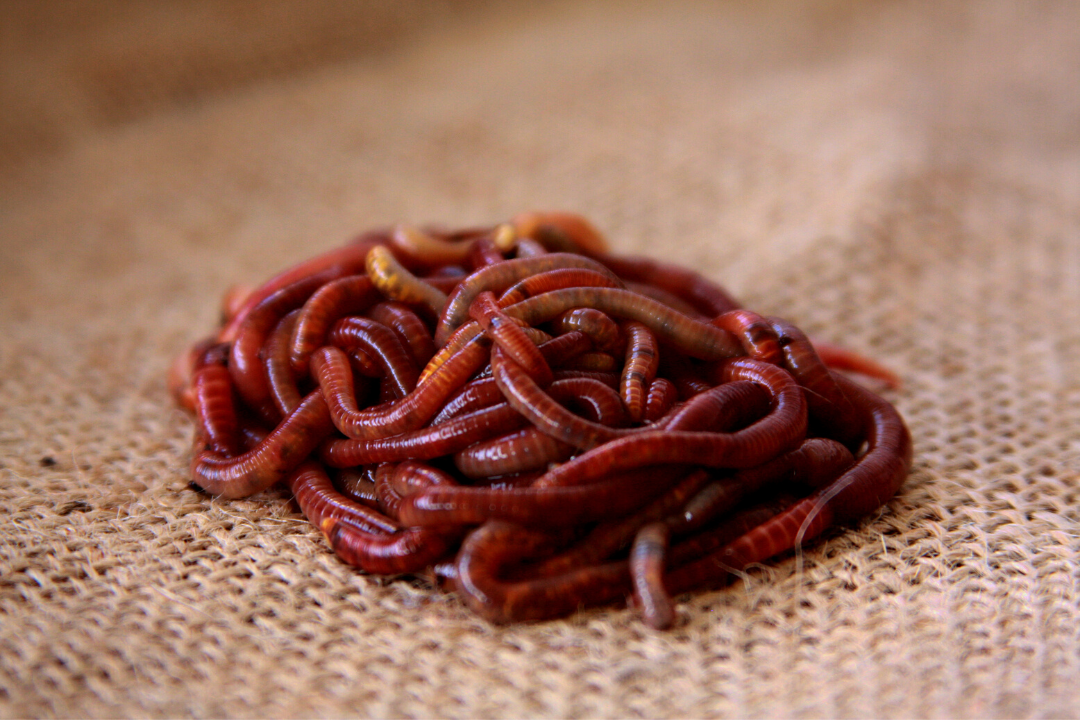Taking Advantage Of the Power of Red Wigglers for Lasting Gardening
The combination of red wigglers into lasting gardening techniques provides a compelling opportunity for improving soil health and reducing organic waste. These worms stand out at transforming kitchen scraps right into beneficial garden compost, which not only improves the dirt however likewise cultivates an extra resilient yard environment. Recognizing the subtleties of setting up an effective worm container and keeping a balanced diet for these organisms can substantially affect gardening end results. The ramifications of such techniques prolong past plain visual appeals; they hold the potential to reshape our approach to ecological horticulture. What factors to consider should be prioritized for optimal outcomes?
Benefits of Red Wigglers
(Red Wiggler Express)Taking advantage of the power of red wigglers can transform your horticulture techniques and enhance dirt health. As they take in cooking area scraps and backyard waste, red wigglers transform this product right into nutrient-rich worm spreadings, which offer as a natural plant food.
(Hickory NC Worms For Sale)Furthermore, red wigglers add to raised dirt aeration and water drainage. Their burrowing task creates networks that allow air and water to pass through much deeper right into the dirt, advertising much healthier origin systems and improving plant development. Additionally, the existence of advantageous bacteria in worm castings aids in reducing soil-borne diseases, consequently cultivating a much more durable garden environment.
Incorporating red wigglers into your horticulture regimen not only supports ecological sustainability however likewise causes higher plant returns and healthier plants. By embracing these flexible animals, gardeners can successfully recycle natural matter, grow rich soil, and contribute to an extra sustainable future.
Establishing a Worm Bin
Developing a worm container is an uncomplicated process that can substantially enhance your sustainable horticulture initiatives. To start, select an ideal container that is nontransparent, well-ventilated, and has a lid. A plastic bin or wood box with dimensions of roughly 2 feet by 3 feet works well. Drill small openings in the sides and bottom to guarantee proper airflow and drain.
Following, prepare the bed linens material, which is crucial for the worms' environment. Suitable alternatives consist of shredded paper, cardboard, coconut coir, or peat moss. Go for a bedding deepness of regarding six inches, guaranteeing it is damp yet not soggy. This produces an ideal environment for the worms to flourish.

Feeding Your Red Wigglers
Feeding your red wigglers is an essential Red Wiggler Express aspect of maintaining a healthy worm container, and comprehending their dietary preferences can significantly boost the composting process. Red wigglers thrive on a balanced diet regimen primarily composed of organic materials. Suitable food resources include fruit and veggie scraps, coffee grounds, and crushed eggshells, which supply important nutrients.
It is essential to avoid feeding them meat, dairy, and oily foods, as these can bring in insects and develop undesirable odors. Additionally, the dimension of the food fragments ought to be minimized to facilitate quicker decay and less complicated intake by the worms. A general guideline is to add food in moderation, guaranteeing it can be consumed within a couple of days to stop mold and mildew growth and anaerobic conditions.
Keeping a diverse diet plan for your red wigglers not just adds to their health however also improves the quality of the compost created. Checking the worm container's dampness level is important, as red wigglers thrive in a wet setting, but excess dampness can bring about food perishing. Routinely examining and changing their feeding schedule will certainly guarantee a thriving worm population that contributes considerably to sustainable horticulture methods.

Using Worm Castings in the Yard
Worm spreadings, the nutrient-rich result of red wigglers' food digestion, play a vital function in boosting dirt health and wellness and fertility in the yard. These castings are rich in essential nutrients such as nitrogen, phosphorus, and potassium, which are essential for plant growth. In addition, they contain useful microbes that promote a healthy and balanced soil community.

Beyond nutrient content, worm spreadings also aid suppress plant diseases and bugs. The valuable microorganisms existing in the castings can outcompete hazardous pathogens, minimizing the incidence of root rot and other soil-borne diseases.
To efficiently utilize worm castings, apply them at a rate of one part spreadings to 3 parts dirt when growing - Red Wiggler Express. Regular applications throughout the growing period can better improve dirt health and wellness, making sure a lasting and effective horticulture experience
Preserving a Healthy Worm Populace
Routinely keeping a healthy and balanced population of red wigglers is vital for the success of sustainable gardening methods. These earthworms not only boost dirt fertility yet likewise improve its framework and oygenation. To ensure a thriving worm population, numerous key aspects should be addressed.
First, give an ample environment, which consists of a moist, dark environment abundant in natural matter. Severe temperatures can worry or kill the worms.
Feeding techniques also play a significant duty. Introduce kitchen area scraps gradually, ensuring they are carefully chopped to promote disintegration. Stay clear of citrus peels and meat items, which can disrupt the worm environment. Consistently examine the worm bin for indications of overfeeding or odor, showing that the balance is off.
Verdict
Using the power of red wigglers in sustainable horticulture offers a useful possibility to boost soil wellness and decrease natural waste. The benefits of worm castings, consisting of improved soil structure, enhanced nutrition availability, and illness reductions, add to a more resilient community. Effectively setting up and preserving a worm container, along with providing a balanced diet plan, guarantees a growing worm population. Eventually, the integration of red wigglers into horticulture practices promotes an eco-friendly strategy to sustainable farming.